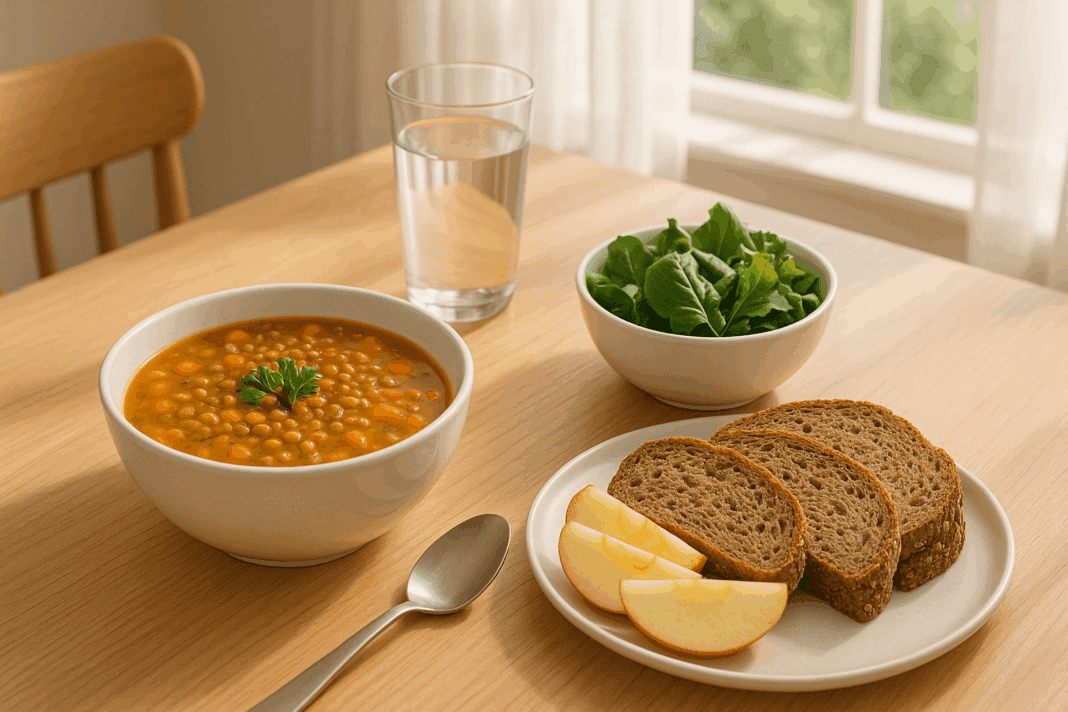Hemorrhoids are an increasingly common health concern, particularly in Western populations where dietary patterns often lack sufficient fiber. While medical treatments like creams, suppositories, or even surgical procedures can provide temporary relief, the long-term management of hemorrhoids requires a foundational approach to nutrition. One of the most critical dietary strategies centers on high fiber intake. In fact, integrating high fiber foods for hemorrhoids into your daily meals not only alleviates symptoms but also promotes robust gut health. This comprehensive guide delves into how nutrition, particularly fiber-rich foods, plays a pivotal role in managing hemorrhoids while fostering overall digestive well-being.
You may also like: The Ultimate Guide to Gut Healthy Meals: Best Meals for Gut Health and Nourishing Recipes You’ll Love
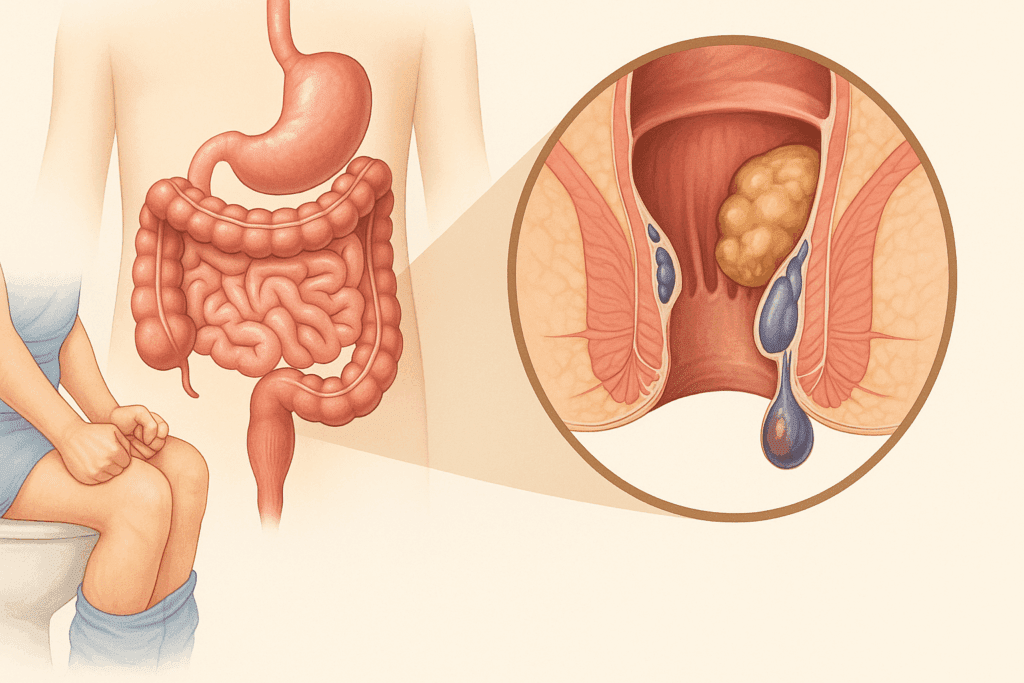
Understanding Hemorrhoids and Their Connection to Diet
Before discussing specific foods or nutritional strategies, it’s vital to understand what hemorrhoids are and how they form. Hemorrhoids are swollen veins located in the lower rectum and anus, similar in nature to varicose veins. They can be either internal or external, with symptoms ranging from itching and irritation to pain and rectal bleeding. Constipation and straining during bowel movements are among the most common culprits, both of which are heavily influenced by diet.
A diet low in fiber can lead to harder stools and irregular bowel movements, significantly increasing the risk of hemorrhoidal flare-ups. When stools lack bulk and softness, more effort is required to expel them, exerting pressure on the rectal veins. This pressure may cause existing hemorrhoids to worsen or new ones to form. Conversely, a diet rich in fiber can soften stools and make them easier to pass, reducing the strain that contributes to hemorrhoid development. Thus, modifying one’s diet becomes not only a therapeutic measure but also a preventive strategy.
Why High Fiber Foods Are Key to Hemorrhoid Management
Fiber, a type of carbohydrate found in plant-based foods, is not digested by the human body. Instead, it moves through the digestive system, adding bulk to the stool and aiding its smooth passage. There are two primary types of fiber: soluble and insoluble. Soluble fiber dissolves in water to form a gel-like material, helping to soften stool and slow digestion. Insoluble fiber adds bulk to the stool and helps food pass more quickly through the stomach and intestines.
Both types of fiber are essential for optimal digestive function. For individuals dealing with hemorrhoids, a combination of soluble and insoluble fiber can reduce the frequency and severity of symptoms. Fiber’s ability to regulate bowel movements helps prevent constipation, the leading cause of hemorrhoidal irritation. Moreover, a fiber-rich diet encourages the growth of healthy gut bacteria, which further supports digestive health and reduces inflammation.
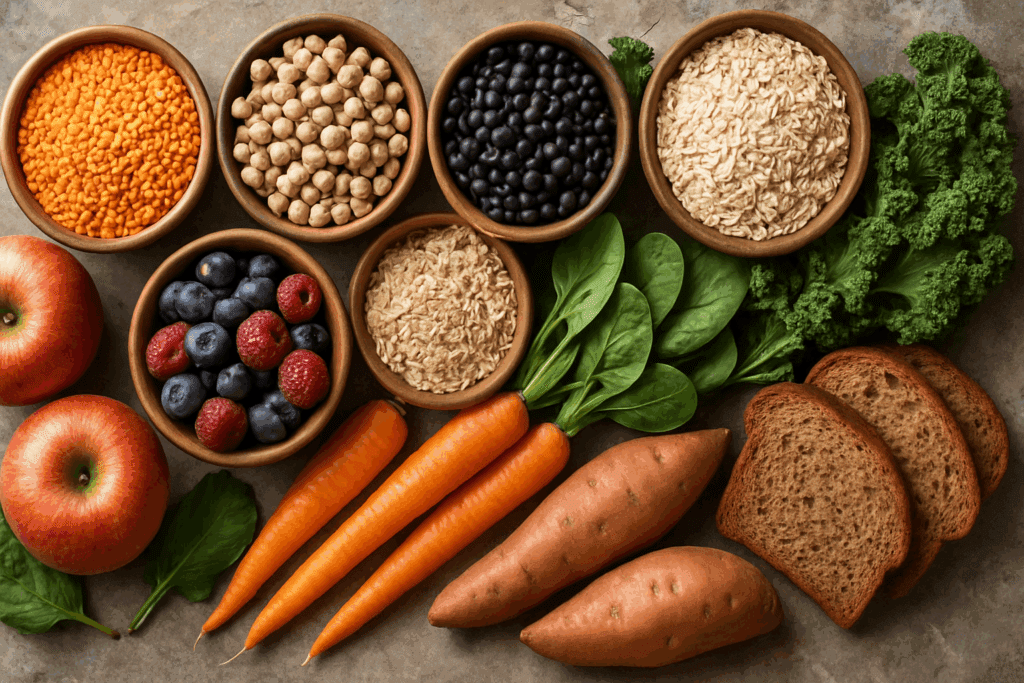
High Fiber Foods for Hemorrhoids: Everyday Staples for Relief
When exploring dietary interventions, incorporating high fiber foods for hemorrhoids is paramount. Fortunately, many fiber-rich foods are readily available and easy to integrate into everyday meals. Legumes such as lentils, chickpeas, and black beans are excellent sources of both soluble and insoluble fiber. A cup of cooked lentils provides around 15 grams of fiber, covering over half the daily recommended intake for adults.
Whole grains are another valuable addition. Oats, brown rice, barley, and whole wheat bread contain ample fiber and essential nutrients. Oats, for instance, are rich in beta-glucan, a soluble fiber that supports gut microbiota and helps regulate stool consistency. Fruits like apples, pears, and berries provide fiber along with hydrating water content and antioxidants that reduce inflammation.
Vegetables, particularly leafy greens and cruciferous varieties, are among the best foods for hemorrhoids. Kale, spinach, broccoli, and Brussels sprouts contain high levels of fiber, vitamins, and minerals that promote colon health. Root vegetables like carrots, beets, and sweet potatoes add further diversity and fiber to your plate. Even simple changes, such as snacking on almonds or sunflower seeds, can boost your daily fiber intake.
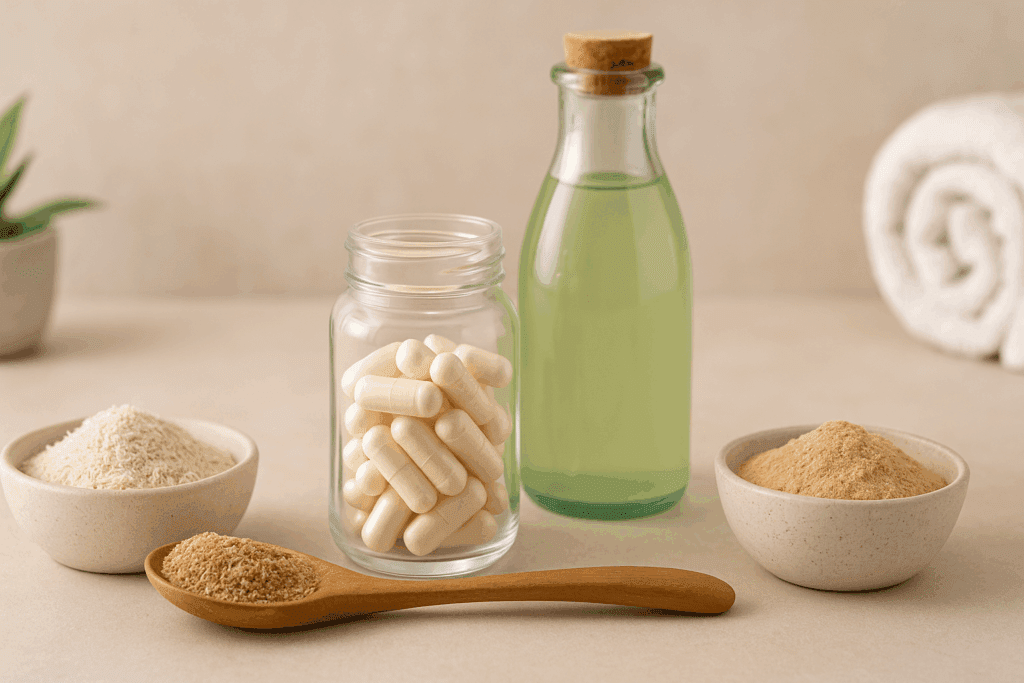
How the Best Foods for Hemorrhoids Improve Bowel Regularity
Bowel regularity is central to hemorrhoid prevention and management. Without consistent elimination patterns, waste can accumulate, harden, and become difficult to expel. This leads to straining, which exacerbates hemorrhoid symptoms. The best foods for hemorrhoids are those that not only supply fiber but also offer hydration and ease of digestion.
For example, prunes and figs have long been used as natural laxatives due to their high fiber content and sorbitol, a sugar alcohol with mild laxative effects. Kiwi and papaya are equally beneficial, containing enzymes that aid digestion and help soften stools. These fruits can be particularly helpful when consumed on an empty stomach in the morning, stimulating gentle bowel movements without irritation.
Including plenty of water with these foods is crucial. Fiber functions best when paired with adequate hydration. Water helps fiber swell and create softer, bulkier stools. Without enough fluid intake, fiber can actually have the opposite effect, leading to bloating or discomfort. Therefore, the integration of high fiber foods must always go hand-in-hand with proper hydration.
Holistic Supplements That Complement a High Fiber Diet
While whole foods are the cornerstone of nutritional therapy, certain holistic supplements can enhance the effectiveness of a fiber-rich diet. Psyllium husk, derived from the seeds of the Plantago ovata plant, is one of the most researched fiber supplements and has been shown to relieve constipation and promote bowel regularity. Available in powder or capsule form, it acts as a bulking agent that absorbs water and forms a gel-like substance in the digestive tract.
Another valuable supplement is ground flaxseed, which provides both soluble and insoluble fiber as well as anti-inflammatory omega-3 fatty acids. When added to smoothies, oatmeal, or yogurt, flaxseed can help soften stools and support gut health. Additionally, probiotics—beneficial bacteria that support the digestive system—can be taken as supplements to balance gut flora and reduce intestinal inflammation, further easing the burden on the rectal veins.
Aloe vera juice and slippery elm bark are examples of herbal supplements used in traditional medicine for gastrointestinal health. These substances help soothe the mucosal lining of the intestines and reduce discomfort during bowel movements. However, it is essential to consult a healthcare provider before introducing any new supplement, especially for individuals with chronic health conditions or those taking medications.
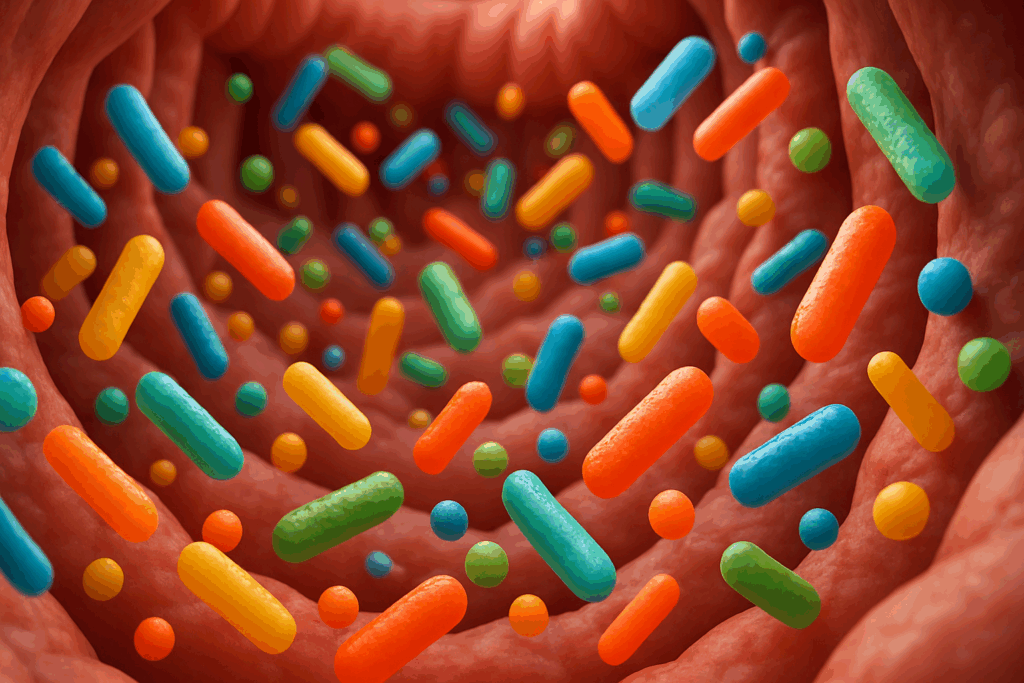
Creating a Personalized Diet for Hemorrhoids That Promotes Healing
Crafting a tailored diet for hemorrhoids requires understanding individual digestive patterns, food preferences, and lifestyle factors. A personalized diet begins with assessing fiber intake, ideally aiming for 25 to 38 grams per day depending on gender and age. However, the transition to a high fiber diet should be gradual to avoid bloating or gas.
Start by incorporating one new fiber-rich food per meal. For breakfast, oatmeal topped with berries and a sprinkle of chia seeds is both nourishing and easy on the digestive system. Lunch can feature a whole grain wrap filled with hummus, leafy greens, and shredded carrots. For dinner, lentil soup paired with roasted vegetables and quinoa provides a satisfying, fiber-dense option. Snacks can include fruits like apples or pears, alongside a handful of nuts.
Monitoring your body’s response to these changes is crucial. Keeping a food journal can help identify patterns and track symptom improvement. Also, building routines around consistent meal times and regular physical activity supports bowel health. Walking after meals or practicing gentle yoga can encourage peristalsis—the rhythmic contraction of the intestines that propels stool.

Foods to Eat for Hemorrhoids: What Science and Tradition Recommend
A balanced approach to managing hemorrhoids merges both scientific evidence and traditional wisdom. From both perspectives, the emphasis remains on foods to eat for hemorrhoids that ease digestion, reduce inflammation, and nourish the gut lining. Fermented foods like sauerkraut, kefir, and kimchi introduce beneficial probiotics, enhancing microbial diversity in the gut. These microorganisms aid in breaking down fiber and producing short-chain fatty acids that strengthen the intestinal barrier.
Bone broth, while not high in fiber, provides collagen and amino acids that repair tissue and may support gut integrity. Herbal teas made from chamomile, ginger, or peppermint have long been used to soothe gastrointestinal distress. These beverages can relieve gas, reduce cramping, and improve overall digestion, making them helpful adjuncts to a fiber-focused regimen.
It’s also important to avoid foods that can trigger or worsen hemorrhoidal symptoms. Processed foods, refined sugars, and low-fiber meals can lead to sluggish digestion and constipation. Alcohol and caffeine, if consumed in excess, may dehydrate the body and increase straining during bowel movements. Moderation, mindfulness, and a return to whole, unprocessed foods form the cornerstone of long-term hemorrhoid relief.
Exploring the Gut Microbiome’s Role in Hemorrhoid Prevention
The gut microbiome—the diverse ecosystem of bacteria residing in the digestive tract—has a profound influence on bowel health. Emerging research suggests that imbalances in gut flora may contribute to chronic constipation and inflammation, both of which are risk factors for hemorrhoids. A thriving microbiome promotes efficient digestion, regular elimination, and a well-functioning immune system.
High fiber diets feed beneficial bacteria, especially those that produce butyrate, a short-chain fatty acid known for its anti-inflammatory properties. Foods like legumes, whole grains, bananas, and asparagus act as prebiotics, nourishing these microbes. In turn, a balanced microbiome helps prevent the conditions that foster hemorrhoid development.
Stress also impacts gut health. Chronic stress can disrupt microbial balance, increase intestinal permeability, and alter bowel habits. Practices such as mindful eating, meditation, and adequate sleep can positively influence gut-brain communication and improve overall digestive function. By addressing both the internal and external factors influencing gut health, individuals can build a comprehensive strategy for hemorrhoid prevention.

Meal Planning Tips Featuring High Fiber Foods for Hemorrhoids
Incorporating high fiber foods for hemorrhoids into a weekly meal plan doesn’t have to be complicated. Begin by designing meals around plant-based staples and whole grains. Batch-cooking lentil stews, quinoa salads, or roasted vegetables ensures that healthy options are readily available throughout the week. A slow cooker can be an invaluable tool for preparing fiber-rich soups and casseroles with minimal effort.
Smoothies are another convenient way to boost fiber intake. A blend of spinach, banana, berries, and flaxseed offers a nutritious breakfast or snack. Whole grain toasts topped with avocado or almond butter serve as fiber-rich alternatives to processed breakfast foods. For lunch, grain bowls with a base of brown rice or barley, topped with beans, leafy greens, and tahini dressing provide a satisfying and gut-friendly option.
Additionally, variety is essential for maintaining interest and ensuring a broad spectrum of nutrients. Rotating different legumes, grains, fruits, and vegetables throughout the week can prevent dietary boredom while supporting a diverse microbiome. Keeping healthy snacks like air-popped popcorn, trail mix, or chopped veggies on hand helps maintain fiber intake between meals.
Overcoming Common Challenges in a High Fiber Diet for Hemorrhoids
Transitioning to a high fiber diet can come with initial hurdles. Bloating, gas, and digestive discomfort are common side effects when fiber intake increases too rapidly. To mitigate these issues, it’s crucial to introduce new high fiber foods gradually and drink plenty of water. Cooking vegetables instead of consuming them raw can also reduce digestive strain.
Some individuals may have underlying gastrointestinal conditions such as irritable bowel syndrome (IBS), which can complicate fiber intake. In such cases, working with a registered dietitian or gastroenterologist can help identify which fibers are best tolerated. Soluble fibers, for example, are often easier on sensitive digestive systems and can be found in foods like oats, carrots, and apples.
Consistency and patience are key. It may take several weeks to notice significant improvements, but the benefits of a fiber-rich diet extend far beyond hemorrhoid relief. Enhanced energy, clearer skin, improved mood, and better weight management are additional perks of optimizing dietary fiber.
Frequently Asked Questions: Dietary Strategies for Hemorrhoid Relief and Gut Health
How do high fiber foods for hemorrhoids help manage flare-ups beyond just softening stool?
High fiber foods for hemorrhoids do more than merely soften stool to reduce straining during bowel movements. These foods contribute to overall intestinal motility, which enhances the regularity and predictability of bowel movements. In doing so, they reduce the incidence of pressure spikes in the rectal veins, which is a known trigger for flare-ups. Moreover, certain high fiber foods contain anti-inflammatory compounds and prebiotics that feed beneficial gut bacteria, helping to lower local inflammation and support mucosal repair. In the long run, these biological shifts foster a healthier gut ecosystem that can reduce the recurrence of hemorrhoidal symptoms.
Are there specific cultural or regional diets that naturally support a high fiber lifestyle ideal for hemorrhoid prevention?
Yes, several traditional diets around the world naturally emphasize foods to eat for hemorrhoids by prioritizing plant-based and fiber-rich options. For instance, the Mediterranean diet features whole grains, legumes, fruits, and vegetables as staples, offering high fiber content with added anti-inflammatory benefits from olive oil and herbs. Similarly, many East Asian diets incorporate fermented vegetables, seaweed, and beans, which are not only high in fiber but also promote gut microbial diversity. African diets rich in millet, cassava, and leafy greens are also fiber-dense and often consumed in minimally processed forms. Adopting elements from these culinary traditions can make transitioning to a diet for hemorrhoids more flavorful and culturally enriching.
Can stress levels affect how effective high fiber foods for hemorrhoids are?
Absolutely. While dietary fiber is a powerful tool in managing hemorrhoids, chronic stress can undermine its effectiveness. Stress affects the gut-brain axis, altering gut motility and microbial composition, which can lead to either constipation or diarrhea—both of which can exacerbate hemorrhoidal symptoms. High stress levels also elevate cortisol, which can increase inflammation in the body and counteract the soothing effects of a high fiber diet. Incorporating mindfulness practices such as yoga, deep breathing, or even mindful eating alongside your dietary interventions can enhance the benefits of high fiber foods for hemorrhoids by promoting a more balanced and responsive digestive system.
What are some lesser-known, high fiber foods that support a diet for hemorrhoids?
Beyond the commonly mentioned oats, legumes, and leafy greens, there are several underappreciated fiber-rich foods that can be valuable in a diet for hemorrhoids. Artichokes are particularly high in fiber and contain inulin, a prebiotic that feeds healthy gut bacteria. Jerusalem artichokes and sunchokes offer similar benefits and are versatile in soups and roasts. Tigernuts, though technically a tuber, are rich in resistant starch and dietary fiber, making them a unique snack option. Additionally, amaranth and teff are ancient grains that provide both soluble and insoluble fiber while being gluten-free. Including these lesser-known foods adds variety and broadens the spectrum of micronutrients and prebiotic fibers in your diet.
Are there certain cooking methods that preserve or enhance the benefits of the best foods for hemorrhoids?
Yes, cooking methods can significantly influence the fiber quality and nutrient retention of the best foods for hemorrhoids. Steaming vegetables helps preserve their water-soluble vitamins and maintains much of their fiber structure, making them easier to digest without compromising benefits. Light sautéing in olive oil can enhance the absorption of fat-soluble vitamins in leafy greens and cruciferous vegetables. On the other hand, overboiling can leach nutrients into the water, which is often discarded. Roasting root vegetables like carrots and sweet potatoes can intensify their natural sweetness while maintaining their fibrous content. Fermenting high fiber foods, such as cabbage into sauerkraut, not only preserves them but also enhances their probiotic profile, further supporting gut health.
What are the long-term implications of not addressing hemorrhoids with a fiber-focused diet?
Ignoring hemorrhoids or relying solely on short-term treatments without dietary adjustments can lead to persistent discomfort and complications. Chronic hemorrhoids can become thrombosed or prolapsed, requiring more invasive interventions like rubber band ligation or surgery. More subtly, ongoing constipation and straining may reflect a deeper imbalance in gut health, potentially increasing the risk of diverticulitis or anal fissures. A lack of sufficient dietary fiber may also contribute to dysbiosis, or microbial imbalance, which is increasingly linked to inflammatory bowel conditions and even metabolic disorders. By focusing on a sustainable intake of high fiber foods, individuals not only manage current symptoms but also reduce the risk of future gastrointestinal issues.
How does a high fiber diet influence the gut microbiome differently in people with hemorrhoids compared to the general population?
People with hemorrhoids often have a more compromised gut environment due to inflammation, constipation, or repeated use of laxatives. When they adopt a high fiber diet, the effects on the gut microbiome can be more pronounced than in those with baseline healthy digestion. High fiber foods act as prebiotics, encouraging the growth of beneficial bacteria that restore balance and reduce inflammation. For individuals dealing with hemorrhoids, this microbial shift can improve stool consistency, reduce bloating, and create a more resilient intestinal lining. Over time, these changes not only alleviate hemorrhoid symptoms but also foster a gut environment less prone to irritation or vascular swelling.
Can high fiber foods for hemorrhoids be effective for people with coexisting digestive issues like IBS or acid reflux?
High fiber foods for hemorrhoids can be effective even for individuals with other digestive conditions, but the approach requires nuance. For those with IBS, particularly IBS-D (diarrhea predominant), insoluble fiber may aggravate symptoms, whereas soluble fiber such as that found in oats, psyllium husk, and chia seeds is typically better tolerated. Similarly, people with acid reflux might need to avoid certain high fiber foods like citrus fruits or raw onions, which can trigger symptoms despite their fiber content. Gradual introduction and individualized monitoring are key, and working with a dietitian can help tailor a fiber strategy that benefits both hemorrhoids and coexisting conditions. The aim is to balance digestive comfort while ensuring fiber needs are met in a tolerable and therapeutic way.
How do lifestyle habits interact with foods to eat for hemorrhoids in determining treatment success?
While foods to eat for hemorrhoids play a foundational role, lifestyle habits often dictate how effective those foods will be. Sedentary behavior can slow down intestinal transit, reducing the effectiveness of dietary fiber. Engaging in regular movement, such as walking or low-impact exercises, stimulates gut motility and works synergistically with fiber intake. Additionally, posture during bowel movements matters—a squatting position can align the colon more naturally and reduce straining. Hydration habits also interact with fiber to determine stool consistency; insufficient water intake can render fiber less effective or even counterproductive. Therefore, lifestyle and diet must be harmonized to maximize symptom relief and long-term recovery.
Is there a risk of over-consuming fiber when following a diet for hemorrhoids?
Yes, while a high fiber diet is generally beneficial, overconsumption—especially when introduced too quickly—can lead to unintended side effects. Excessive fiber intake without adequate water can cause bloating, gas, and even constipation, counteracting its benefits. For people with sensitive digestive systems, high doses of insoluble fiber may irritate the bowel lining or exacerbate cramps. The key lies in gradual increases, aiming for a total daily intake of 25 to 38 grams depending on age and gender. Monitoring how your body responds and adjusting accordingly ensures that your diet for hemorrhoids remains both effective and sustainable over time.
Conclusion: Restoring Digestive Balance Through the Right Diet for Hemorrhoids
In the journey toward lasting hemorrhoid relief, dietary changes stand as a powerful and foundational tool. By prioritizing high fiber foods for hemorrhoids, individuals not only alleviate discomfort but also cultivate long-term digestive wellness. The integration of legumes, whole grains, fruits, vegetables, and holistic supplements forms a comprehensive approach to healing.
Understanding the intricate connections between diet, gut health, and hemorrhoidal symptoms allows for more empowered and informed food choices. With the support of science-backed nutrition and traditional wisdom, it’s possible to transform the experience of living with hemorrhoids into one of restoration and balance. Whether you’re looking to prevent future flare-ups or manage existing symptoms, the right diet for hemorrhoids offers a path to sustained comfort, resilience, and vibrant health.
Further Reading:
Best and Worst Foods for Hemorrhoids
Which foods to eat and avoid to help treat and prevent piles

